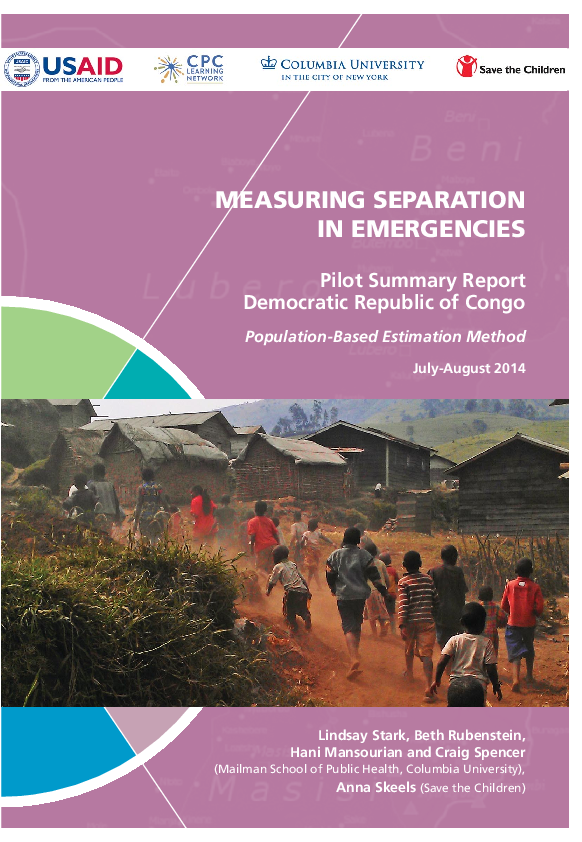
Reports
Measuring Separation in Emergencies: Pilot summary report Democratic Republic of Congo
Publication year:
2014
English, French
Format:
pdf (1.8 MiB)
Publisher:
Columbia University,Save the Children,The CPC Network, Child Protection in Crisis,USAID, US Agency for International Development
The Measuring Separation in Emergencies (MSiE) project is an interagency initiative funded by the USAID Office of Foreign Disaster Assistance (OFDA) and is coordinated by Save the Children in partnership with Columbia University and Johns Hopkins University. Additionally, it is steered by a multi-agency Advisory Panel including members of the Inter Agency Working Group on Unaccompanied and Separated Children (IAWG UASC) and the Assessment and Measurement Task Force (A&MTF) of the Global Child Protection Working Group (CPWG).
The overall aim of the MSiE project is to strengthen emergency response programmes for unaccompanied and separated children (UASC) through the development of practical, field-tested tools to enhance the assessment of the scale and nature of separation in emergencies. Three methods for measuring separation in emergencies are currently being explored:
- Projection method
- Population-based estimation method
- Community-based surveillance method
The first document reports on the field testing of the population-based estimation method (or ‘estimation method’) in North Kivu in the Democratic Republic of Congo (DRC). The estimation method seeks to provide population-based estimation of the prevalence, number and basic characteristics of UASC in a defined area, at any given point in time.
A pilot summary report of the community-based surveillance method is available here.
The second pilot summary document reports on the field testing of the community-based surveillance method in North Kivu in the Democratic Republic of Congo (DRC). The community-based surveillance method incorporates a community-based surveillance system capable of continuous, ongoing measurement of trends in the frequency and basic characteristics of UASC in defined areas over time.
A pilot summary report of the population-based estimation method is available here.
Read full abstract
Authors
View & Download
Autodetected language
English
4 Documents
Other languages
Document information
Publisher
Format
Content type
Region
Rights
© Author/Publisher
Found a mistake? Help us improve!
If you have noticed a document assigned to the wrong author or any other inaccuracies, let us know! Your feedback helps us keep our data accurate and useful for everyone.
Share
Link
